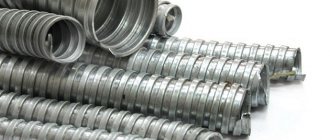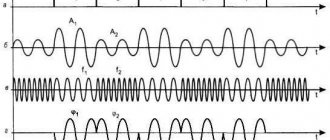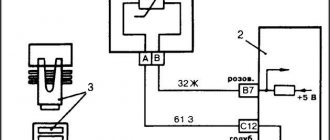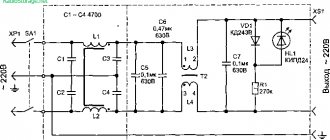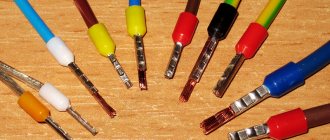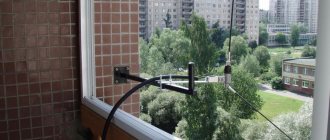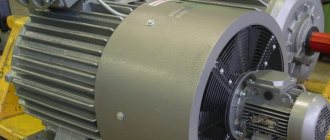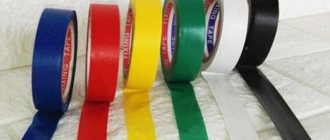Types and design features
Nowadays there is a huge selection of different screeds on the building materials market. They differ in size, material, countries of origin, shapes and colors.
The peculiarity of the ties is that they can be connected to each other, thereby creating one large and strong link.
According to the manufacturers, their clamps can withstand a load of over 100 kilograms, but in reality this is not quite the case.
Nylon tie device
The clamp is made in the form of a thin narrow strip with a lock on one side and the opposite side cut at an acute angle. There are sawtooth teeth on the inner surface of the plastic strip.
There is a tongue installed inside the lock, on which protrusions identical to the working surface are applied. When fixing the clamp, the pointed tip is inserted into the lock between the top of the head and the tongue. When tensioned, the protrusions of the tongue are securely fixed in similar protrusions on the inner surface.
The teeth are located at an angle and when the tongue is fixed, it cannot move in the opposite direction. The free end of the plastic clamp is cut with scissors or pliers.
The photo of nylon ties shows that the pointed part is slightly bent inward. During operation, the concave part should be directed towards the installer.
Types of locks:
- Standard plastic installation.
- With a metal tooth - the tongue is made of stainless steel and is located at an angle of 450. A single protrusion allows you to fix the clamp on any area and control the degree of tightening.
- The reinforced nylon clamp differs from standard fasteners in the arrangement of the serrated working surface. The protrusions are applied on the outside of the plastic tape, and the lock has a wide flap with two parallel tongues. To fix it, pliers or a special tool are required. Its tooth engagement area is 4 times larger than standard products.
All types of clamps are consumables and are used once.
Disposable or reusable?
There are situations when it is not necessary to buy an expensive cable. To avoid unnecessary financial expenses, manufacturers offer their customers to purchase disposable zip ties.
Their advantages lie in the following criteria:- Acceptable price.
- Wide selection of goods in stores.
- Good strength.
Due to the low cost of ties, you can buy a large number of them and make one very strong link of great length from them. Based on this, we can conclude that disposable zip ties are an economically beneficial solution for any owner.
Reusable cables have a significant difference in price, but they are of better quality, which will allow them to last much longer.
How to make a transformer with your own hands - step-by-step instructions, diagram, drawings, list of materials + photo of a finished homemade transformerWhich hidden wiring detector is better? TOP 10 best manufacturers with photos and descriptions
Technological maps in construction - what is it?
From this we can conclude: The price-quality ratio of the reusable cable is absolutely justified.
As previously mentioned, such screeds withstand the vagaries of the weather and can withstand temperatures below -25 degrees.
Areas of use
We have discussed the sizes of cable ties, and now let’s talk about where they can be used. It is clear that installation of wires and cables indoors and in equipment is the most common way to use cable ties. But there are other options.
For example, you decide to use mesh as a fence. It must be attached to the racks, but it is up to you to choose the method of attachment.
Typically, nails were used for this if the fence posts were made of wood, or wire if the posts were made of steel. It will be easier to use screeds for external work - installation is easier, and dismantling is also easier. Why specifically for outdoor work?
The thing is that screeds also differ in the conditions for which they are intended. Screeds for outdoor use are more expensive because additional polymers were used in their creation, thanks to which the screeds can be exposed to heat, rain and frost without problems.
You can use the most ordinary screeds outside without any problems, they will just dry out relatively quickly and lose their elasticity. As a result, they will simply break.
Attaching a fence is just one option from a huge number of options, the variety of which is limited only by your imagination and ingenuity.
After all, you can connect several small ties to secure one large bundle or cable. As you can see, screeds are a fairly flexible installation tool.
Tie sizes
If we rely on the standard sizes of screeds in European countries, then the average length of any tie is 500 millimeters.
Our country has its own standards by which manufacturers work. The size of the ties in the Russian Federation is 250 millimeters and the width is 24 millimeters.
What it is
Cable ties are strips of flexible, durable polymer. Needed to connect wires into a single bundle. They are called clamps. Ties are considered a convenient and inexpensive method of bandaging during electrical work.
Detailed description
This is interesting! Made from nylon, polypropylene and polyethylene. Nylon models have good mechanical strength, elasticity and exposure to ultraviolet radiation. Polypropylene is the hardest and most durable.
By design, clamps can be non-opening or unlocking. The former help in reliably and quickly collecting wires into bundles or securing wires to structures. For larger diameters, cable ties can be combined to obtain a clamp with the required length.
The latter are created from temperature-resistant material. If it is necessary to fix them on a smooth surface, a special self-adhesive structure is used. For concrete, brick or wood installations, dowel installation is used.
Main varieties
Factors that reduce the quality and service life of screeds
Various chemicals. If they get on the screed, it will have a negative impact on it and can lead to its complete rupture and impossibility of operation.
- How to fix a laptop that won't charge
- Insulated dielectric screwdrivers up to 1000V - tips on how to choose the best manufacturer
Dielectric insulated tool for work - which one is better to choose? Review of manufacturers, photos + video
Temperature. Screeds can withstand cold temperatures, but not hot ones. Temperatures above 80 degrees will also most likely lead to rupture.
Vibration. If the slightest vibration occurs near the cable, this also has a negative effect on it.
Criterias of choice
Before purchasing cable ties, you must first determine your needs:
- Temperature operating conditions;
- Installation is planned indoors or outdoors;
- A simple cable tie or additional fastening to the surface is required;
- Planned load on the clamp (choice of tape width and length);
- Single or multiple use;
- Special conditions of use (exposure to aggressive environments, ultraviolet radiation, vibration, etc.).
Photos of cable ties
Did you like the article? Share

0
Purpose
Cable ties are available for outdoor use and indoor use at home. Outdoor clamps are resistant to ultraviolet radiation, moisture and temperature changes. They are created with the addition of a special carbon powder stabilizer, painted black.
They are considered a hot commodity among buyers, durable and able to withstand more than one hundred kilograms of weight. The clamps can withstand any weather.
Cable banding during electrical work
